Peter Lopez Jr.'s Blog: Xulon Press Blog , page 25
November 7, 2019
Novel Writing: Creating a Cast of Characters
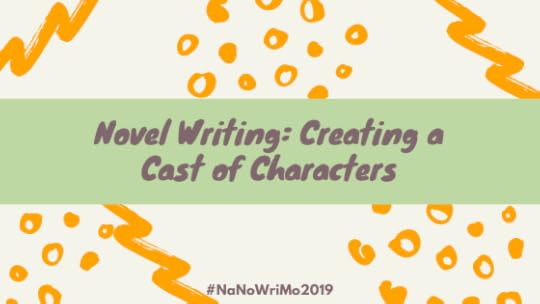
Hello writers!
Hopefully, you’re each waist-deep in NaNoWriMo (National Novel Writing Month). If you haven’t started yet, or have fallen off the wagon just a bit, just jump right back on! The only thing standing between you and a finished novel is your hesitation. And you, sweet writer, have nothing to lose!
As you pound away at your 1,667 words per day, start thinking about characterization. That may sound like a complicated term to some, but it’s simply the process of creating characters in your story. Give them depth, quirks, and their own unique imprint in the storyline. There are a few key ways in which you can create characters with distinct personalities and nuances.
So what IS characterization?
Motivation – what motivates them? What makes them tick?
Experience – how do their experiences shape their viewpoints and reactions?
Self-image – what is in their mirror? How do they see themselves within the unfolding of the plotline?
Speech patterns – what is their voice? How do they speak? Curtly, or in rich, long, languid sentences? Is their vocabulary indicative of a certain region or country?
Create character profiles.
Does your character resemble someone you’ve watched in a movie or someone you know in real life? Print out a picture of that person. Begin jotting adjectives around the sides of the page: impatient, fast-talker, warm, bubbly, touchy-feely, distant and aloof. Jot down pieces of their story, background, habits, and mannerisms. All of these details don’t have to make their way into the story; pick those that are important and weave them in. At the end of the writing process, sort through conversations and interactions. Are your depictions of each character consistent throughout your story with the character’s profile?
One last tip: characterization through dialogue cannot be overly emphasized. If the dialogue is saturated with enough personality that I can tell which character is speaking without seeing them named, it’s a job well done.
What are you waiting for? Get to typing! We can’t wait to see the finished product.
The post Novel Writing: Creating a Cast of Characters appeared first on Xulon Press Blog, Christian Self-Publishing.
November 5, 2019
Happy NaNoWriMo!
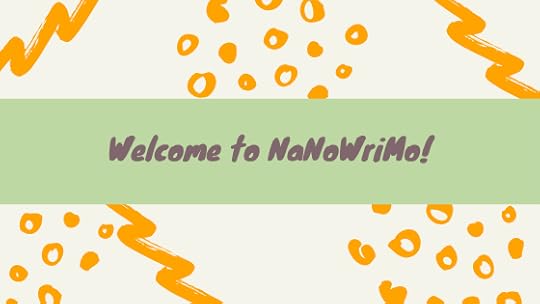
November is a busy month for writers: it’s National Novel Writing Month, also known as NaNoWriMo.
What happens during NaNoWriMo?
It’s simple really. To celebrate the only official book-writing month of the year, writers are encouraged to spend 30 days putting their fingers to the keyboard, completing a 50,000-word book by November 30th.
One month. Boom. Done. You’re one step (a first draft) closer to becoming a published author.
If you have struggled with finding the time and discipline to finish your book, this is one of the easiest ways to jump those hurdles. Your word count can vary from day-to-day, but you will write an average of 1,667 words per day—a totally manageable number.
The concept was created and is hosted by a 501(c)(3) nonprofit organization named NaNoWriMo. Their mission is to help provide tools, structure, community and more for writers and creatives alike.
Throughout the month we’re sharing tools, tips, and tricks to finally getting your book done. We’re here to encourage you through the process.
We’re a few days late to the party with this post but the good news is that this is still 100% doable! Be sure to #NaNoWriMo and #XulonPress in all of your posts about writing this month. We can’t wait to hear how your manuscript is coming along.
On behalf of all of us at Xulon Press, happy writing!
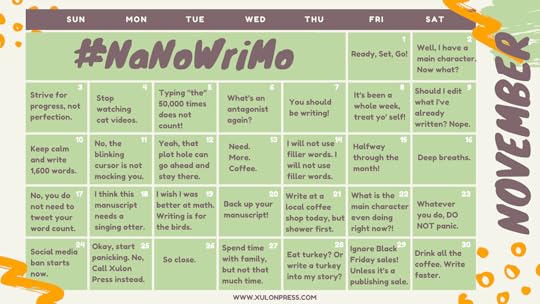
The post Happy NaNoWriMo! appeared first on Xulon Press Blog, Christian Self-Publishing.
October 31, 2019
Why You Should Publish Your Book Before You Turn 30
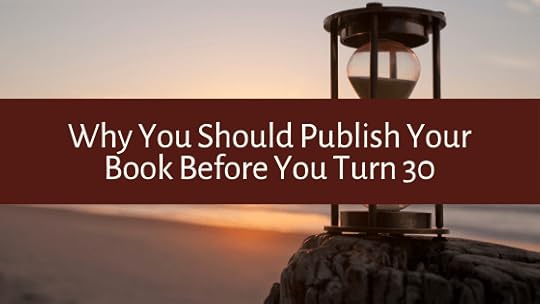
Writing your first book is no easy endeavor. Some might even say you need a certain amount of life experience to add depth to your writing—fiction or nonfiction—but there are a lot of benefits to publishing a book before you turn 30 years old.
Here are seven reasons that support publishing your book before entering the next decade of your life:
1. Financial freedom
It’s easier to save up and spend the necessary money to professionally self-publish your book when you are at a stage in your life when you have the least amount of financial responsibilities and can make an independent choice to spend your money as you choose.
2. Resume builder
Imagine wowing the next hiring manager with the fact that you wrote and published a book. No matter your industry, tackling the process of publishing a book shows your high level of self-motivation and determination.
3. Presents opportunities
Writing a book will garner a certain level of attention for you, which could lead to opportunities to write freelance articles that position you as an expert or could also lead to speaking engagements.
4. Confidence booster
Knowing you produced an entire book from a single idea can be a huge confidence boost.
5. Makes a statement
There are very few people in the world who have a physical representation of what it looks like when they dedicate themselves to and achieve a long-term task.
6. Starts a conversation
Have you ever played the ice-breaker “Two Truths and a Lie”? A group of people has to guess which items you’re telling the truth about and which one is the lie. You’ll not only stump the entire group, but you’ll also have the ability to start a dialogue about your book at that moment—and maybe even sell a few copies.
7. Lessons learned
Writing and publishing a book is a lot of work and requires a certain level of tenacity, but the lessons you learn from the process—commitment, taking constructive criticism, and more—will ultimately propel you forward in other areas of your life, too.
If you want to learn more about publishing your book before entering that next decade of your life, call 1-866-381-2665 and speak with one of our publishing consultants.
The post Why You Should Publish Your Book Before You Turn 30 appeared first on Xulon Press Blog, Christian Self-Publishing.
October 22, 2019
How to Form New Habits
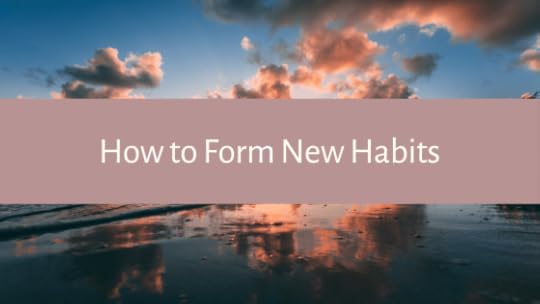
Looking to incorporate a new habit into an already full lifestyle? Well, you’re not alone! Millions of us every year look for ways to incorporate a new habit into our daily or weekly routines. Many of us also fall out of the swing of things with our new routine before they convert to regular habits. Whether you’re looking to make weekly meal prepping your new jam or you’re hoping to incorporate a next-level writing session into your day-to-day, here are 5 tips to get you started!
1. Set your intention.
By now most of us know precisely what this means, but for those of us who don’t, let’s dive in. Setting intentions can help us achieve the end goal. Figure out whatever it is that’s on your heart and make it known to yourself and the world that you are going to make it happen. Whether you do this prayer, meditation, writing it down–find your “why” and make it known in your own special way.
2. Set realistic goals.
Don’t go cliff diving before you climb up the cliff, it just won’t work! Start small and work your way up. Say your ideal habit would be to write for an hour first thing every morning, then start by committing to one hour every week. If it happens in the morning, great. If not, figure out what’s getting in the way of that and determine if you need to adjust your goal based on reality.
3. Grow on those goals.
Once you’ve conquered the first small goal you set for yourself, start to build on it. For example, once you log that you’ve written for an hour per week for multiple weeks, bump it up to two hours per week.
4. Share it with someone.
This part can be incorporated earlier on in this process, but I find that if I wait to share what I’m working on once I’ve already started working on it, I feel a little more “proud” when I do so. Feeling proud of yourself is a great way to stay committed, but having someone in the background checking in and cheering you on can be an even greater help.
5. Don’t stress or obsess.
Whatever you do, don’t stress or obsess over your new found habit. It’s so easy to idolize a thought or a goal that we forget why we’re doing it in the first place. If you’re overly-invested, stressed, or banking on success, just let it go and hit reset. If what you’ve added to your routine causes you an excess of stress, then it isn’t serving its purpose and it isn’t serving you.
Whatever new habits you’re looking to develop or grow, no matter how daunting they may feel, just start! In the words of author Zig Zalger, “You don’t have to be great at something to start, but you have to start to be great at something.”
The post How to Form New Habits appeared first on Xulon Press Blog, Christian Self-Publishing.
October 10, 2019
5 Ways to Paint Fall into Your Writing
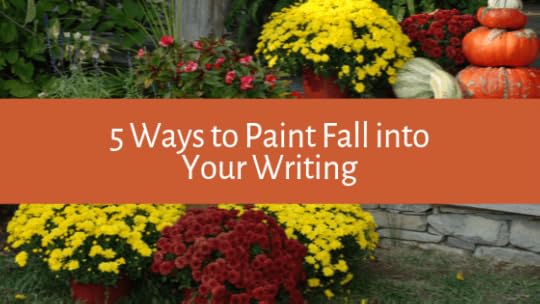
Writing about fall.
There’s a reason one of the first pieces of advice any professional offers to a new writer forging ahead on the publishing journey is, “Show, don’t tell.” Readers don’t want to be told, they want to be shown. So, how does one show information? If we use seasons or weather as an example, which can be used for metaphorical purposes within the telling of a story, we can begin to crack the code on showing, and not telling, information to the reader.
Since most of The States are experiencing autumn right now, it’s a great example to use. Fall is a time of change; the temperatures fall and leaves turn colors before they drop from their trees. If you have a character in a major state of transition, run their life-change parallel with the change of the season. By doing so, you’ll be showing the reader not only the physical elements of the season, but you’ll also be showing them the emotional or physical transition of the protagonist.
So, how do you show your reader autumn in your book? There are five ways to paint autumn into your writing. You know them as the five senses: sight, sound, smell, taste, and feel (touch). If you can harness the power of the senses, you can show anything you want to your reader. Showing is more about tapping into the reader’s imagination and letting them run with the idea than it is about providing cold hard facts.
What triggers your senses during autumn? Make a list of what comes to mind when you correlate your senses to the season.

Once you’ve noted everything your senses recognize about autumn, you can begin to weave them into your story. I’ve provided an example below of how I used my notes to add texture and description without telling readers anything.
Showing, not telling.
A woman stood next to Erin at a secluded stop on the Blue Ridge Parkway; both looking out over the vast reach of the mountain range. The mixture of apple red, fiery orange, and muted yellow washed over the mountainside closest to them. Though, neither woman saw the same view as the other. Erin, feeling tumultuous as she entered an unexpected season of change, saw past the swaths of color painted across the mountainside. Her mind wandered to the beautiful, vibrant leaves that had already fallen to the ground and then turned brown and brittle.
One footstep would crunch those leaves into a million tiny pieces, which is exactly how Erin felt at that moment. She sipped another spicy, sweet taste of her pumpkin spice latte, hoping for warmth, but still felt bone-chilling cold inside. Erin turned to watch the woman standing next to her. The woman had a large camera, with a long lens, in hand—her face pressed up against the camera body. Erin could hear the click of the shutter every few seconds. She wondered what this stranger, looking out at the exact same view, saw when she looked through her lens.
Dorothy came up to the parkway on her day off to be surrounded by the 360-degree view of mountains. To be swathed in the deep, rich colors of red, orange, and yellow. She didn’t look for the turning colors though. Dorothy trained her eye to find the steadfast evergreen tree—deep blackish green, speckled dots on the mountainside compared to the other trees. Dorothy always strived to be strong like the evergreen tree, standing up to the changing seasons, and withstanding the harshest winters life could throw at her.
Fall wasn’t death to Dorothy, but a second spring. She knew winter would come, and the annuals would die away, but she also knew the trees would come back to life come spring. Yes, autumn held more beauty in it than any other season, and she loved capturing those small moments of beauty as she stood tall on the side of a monstrous mountain range.
Dorothy heard the rustling of dried leaves nearby, turning to see the woman who had been quietly standing next to her, walking in her direction. “A beautiful day, isn’t it?” Dorothy asked.
“It sure is,” Erin replied. “Can I ask you something?”
“Sure, Hon.”
“What did you see when you looked through your camera lens?”
“Well, I saw the beauty of changing seasons, but I also looked for the evergreen trees. They are far and few between the swaths of golden yellow and fire engine red, but they are there nevertheless.”
“Why do you look for the evergreens?”
“They are somewhat of a reminder to be strong in the face of the changing seasons of life. Whenever I need that reminder, I come up here.”
The post 5 Ways to Paint Fall into Your Writing appeared first on Xulon Press Blog, Christian Self-Publishing.
October 8, 2019
10 Steps For Starting Your Author Blog
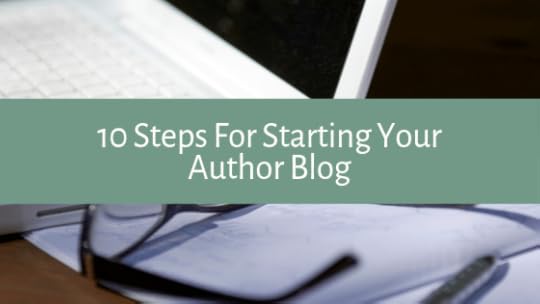
Last week we talked about why every author should have a blog. We got a lot of questions about how to go about starting a blog and figured we would follow up with a post to dive into that a bit more. There are a ton of resources out there for newbies who want to start a blog.
Here are 10 steps to get you started:
Register with a blogging site.
There are many options, but two of the most popular are Blogger.com, WordPress.com (free), or WordPress.org (paid, self-hosted blog; allows for the most customization).
Buy a domain.
If you use Blogger or WordPress.com, the name of your blog will also have the site’s name in it, as such: myawesomeblog.wordpress.com. Want to shorten your blog’s name to myawesomeblog.com? You’ll need to purchase the domain name. Blogger will allow you to use that domain at no cost. WordPress.com will require you to upgrade to their premium plan to use a custom domain name. (WordPress.org users will have to purchase a domain no matter what.)
Design it.
If you’re using Blogger or WordPress.com, there are free “themes” available to style and design your blog. It’s as simple as pointing and clicking. Not seeing anything you like? Check out Etsy for affordable options from web designers. If you’re using WordPress.org, there are literally thousands of beautiful themes you can purchase that are highly customizable (but be forewarned you need a basic working knowledge of web design). If you can, pick a theme labeled “responsive”; this means it will adjust itself to fit perfectly in the screen on tablets and mobile devices.
Get a logo.
As your setting up your site, think about what you want the overall look and feel to be. If you need to design a custom header image for the top of your blog, a logo, etc., you can use Photoshop to make one consistent image to be used on the blog and all your social media. If you’re a design novice, use a tool like Canva which has pre-made designs you can simply paste your details into. (There’s also logo & design services for purchase on Etsy!)
Make sure there’s a “subscribe to this blog” box in a very visible place on your blog.
You want to be able to send posts straight to your subscribers’ inboxes—don’t rely on them remembering to come back to your site.
Reserve your social media channels.
This means a Facebook page (not a profile), and any other channels where you think your potential readers like to gather: Twitter, Instagram, Pinterest, Snapchat or Periscope. Make sure to keep the name as consistent as possible across all channels.
Set up your writing schedule.
Be realistic; don’t bite off more than you can chew. If you know you can easily commit to publishing posts every Monday and Friday morning, do it. Blogs who consistently publish on the same days at the same time get far greater views than those who don’t. Keep a few posts on standby in case you need them.
Contact other sites and blogs, and ask to guest blog.
This gives their readers a chance to discover you! Look for sites that create the type of content that pairs nicely with your message or story, and ask them to link back to your blog in the post.
Share your blog with your friends, family, and email list!
Once your blog is ready, share it everywhere you can.
Stick to it.
Even if your readership levels are low at the start, stick to it and keep creating content! Eventually, your views will grow.
The post 10 Steps For Starting Your Author Blog appeared first on Xulon Press Blog, Christian Self-Publishing.
October 3, 2019
Why Every Author Should Have A Blog
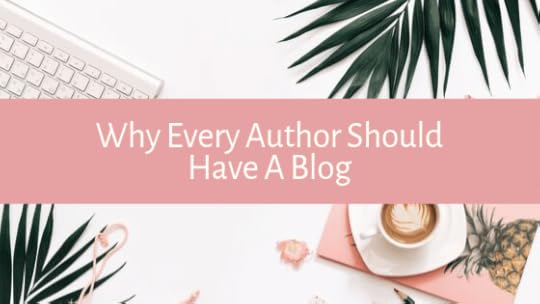
We get this question a lot: why should authors care about blogging? The answer: there are literally too many reasons to list in one article.
If you are an author, blogging is your friend. In fact, you should make it your best friend. I cannot stress enough how helpful it is for building your audience and your platform, and these days, it’s so easy to start a blog! Want more info? We’ll be following up with two more articles about blogging (be sure to subscribe at the top right corner of this page to get the articles straight to your inbox), but to start, I present the top ten reasons why every author should also be a blogger.
It helps you find your people. You need to identify the target audience for your book. If you’re blogging on your subject matter, you don’t have to look any further than your blog audience. Who are they? Men, women, millennials? They’re the ones who will buy your book.
It opens the lines of communication. If someone buys your book, they’ll take it home and read it…once. That’s where your opportunity to inspire and influence them stops. If, however, they take home your book, read it, and then follow your blog, you have an open line of communication to keep talking to them.
It helps you hone your craft. The only way to get better at writing is by doing more of it. Plain and simple.
It provides legitimacy. These days, it’s so easy to set up a professional-looking blog—and its mere existence already makes you look established and professional to media outlets and potential readers. If that thought scares you, but the idea of being a blogger still appeals, then you’re in luck. We offer services that can set up your author website with a blog included for you.
A blog can serve as your PR Agent. Landed an interview with a local media outlet? Got an upcoming event? Share it there. Your blog can also house a “contact me” form so that people can reach you easily.
It provides a place to collaborate. Wanting to expand your audience? Interview other influencers on your blog, or invite them to guest-post. They will then share that post with their audience, leading to…more subscribers on your blog, and hopefully more readers of your book.
It’s introvert-friendly. Don’t love public speaking? As a blogger, you still have a platform to reach people from. It’s just from the safety of your living room instead of live.
It’s the perfect testing ground. Whether it’s your first book, or you’re testing a second book on your already established audience, a blog is a great place to see how they respond to your topic before you go through the process of setting up a publishing deal.
It’s your own personal online bookstore. Have physical copies of your book at your house that you need to sell? Add an online shop component to your blog, and let readers purchase books directly from you!
It’s doable. Most blog posts are between 300-1000 words. Far less daunting than writing a book. You can do this!
The post Why Every Author Should Have A Blog appeared first on Xulon Press Blog, Christian Self-Publishing.
Why Every Author Should Have A Blog

We get this question a lot: why should authors care about blogging? The answer: there are literally too many reasons to list in one article.
If you are an author, blogging is your friend. In fact, you should make it your best friend. I cannot stress enough how helpful it is for building your audience and your platform, and these days, it’s so easy to start a blog! Want more info? We’ll be following up with two more articles about blogging (be sure to subscribe at the top right corner of this page to get the articles straight to your inbox), but to start, I present the top ten reasons why every author should also be a blogger.
It helps you find your people. You need to identify the target audience for your book. If you’re blogging on your subject matter, you don’t have to look any further than your blog audience. Who are they? Men, women, millennials? They’re the ones who will buy your book.
It opens the lines of communication. If someone buys your book, they’ll take it home and read it…once. That’s where your opportunity to inspire and influence them stops. If, however, they take home your book, read it, and then follow your blog, you have an open line of communication to keep talking to them.
It helps you hone your craft. The only way to get better at writing is by doing more of it. Plain and simple.
It provides legitimacy. These days, it’s so easy to set up a professional-looking blog—and its mere existence already makes you look established and professional to media outlets and potential readers. If that thought scares you, but the idea of being a blogger still appeals, then you’re in luck. We offer services that can set up your author website with a blog included for you.
A blog can serve as your PR Agent. Landed an interview with a local media outlet? Got an upcoming event? Share it there. Your blog can also house a “contact me” form so that people can reach you easily.
It provides a place to collaborate. Wanting to expand your audience? Interview other influencers on your blog, or invite them to guest-post. They will then share that post with their audience, leading to…more subscribers on your blog, and hopefully more readers of your book.
It’s introvert-friendly. Don’t love public speaking? As a blogger, you still have a platform to reach people from. It’s just from the safety of your living room instead of live.
It’s the perfect testing ground. Whether it’s your first book, or you’re testing a second book on your already established audience, a blog is a great place to see how they respond to your topic before you go through the process of setting up a publishing deal.
It’s your own personal online bookstore. Have physical copies of your book at your house that you need to sell? Add an online shop component to your blog, and let readers purchase books directly from you!
It’s doable. Most blog posts are between 300-1000 words. Far less daunting than writing a book. You can do this!
The post Why Every Author Should Have A Blog appeared first on Xulon Press Blog, Christian Self-Publishing.
September 26, 2019
Start Small: How to Write a Short Story

If you’re just dipping your toes into the writing world, starting with a full-length novel or nonfiction book may feel overwhelming. Short stories allow you to get a feel for composing a story with a beginning, middle, and end. It also helps you tackle character development and a thorough plot structure without having to devote hundreds of hours to an 80,000-word manuscript.
Short stories can also help pay attention to the complexities that come with the necessity of succinct word choice and help you hone your writing style and tone.
The Basics of a Short Story
Here are 5 simple rules to short stories:
No longer than 8,000 words. The maximum word count of your short story should be no more than 8,000 words, yet most shorts tend to fall around 5,000 words.
Focused on fiction. Short stories are most helpful for writers who want to dive into fiction, yet nonfiction writers could use the short story concept to test an idea and then build it out into a complete book.
Beginning, middle, and end. While your story may be short, it still needs a fully developed plot line that contains three parts: a beginning, middle, and end.
Fewer characters. You don’t need a huge list of characters like you do with a full-length novel. Not only do you not have enough room to introduce several characters, but you also don’t have the room to give any real depth to multiple characters. Use the rule of three and develop a protagonist, antagonist, and a third character to build tension between the first two characters.
Condense exposition. You won’t have the same amount of room for introduction at the beginning of your short story, instead start with an action scene to hook your readers.
The Outcome
Short stories provide new writers the opportunity to get comfortable with their writing before committing to a larger body of work. It helps them begin to incorporate writing into their normal routines, and short stories are easily shareable, so quick feedback is attainable from a critique partner.
For more seasoned writers, short stories provide room for experimentation with a new character or story idea without sinking too much time into an idea if it just won’t work on paper. If a story does work in short form, it can always be expanded into a full-length novel later.
Have you penned a short story before? What do you like or dislike about the process?
The post Start Small: How to Write a Short Story appeared first on Xulon Press Blog, Christian Self-Publishing.
September 24, 2019
5 Books Worth Reading for Writers

You’ve probably heard the old adage that the best writers are the best readers, but what should you actually be reading in order to improve your writing craft? Books published within the genre you’re writing will help you see the tone and style your future readers are accustomed to.
Reading other books in your genre isn’t about mimicking or copying, instead it provides insight into your book’s market. So, if you’re writing YA fiction, be sure to read up on popular novels in that genre. If you’re writing a self-help book geared toward couples who want to improve their relationships, scour the bookstore for other books on the same topic.
When it comes to honing your craft, however, there are five books I will always recommend to every writer—no matter their current skill level.
On Writing: A Memoir of the Craft by Stephen King
Bird by Bird: Some Instructions on Writing and Life by Anne Lamont
Save the Cat! Writes a Novel: The Last Book on Novel Writing You’ll Ever Need by Jessica Brody
Dreyer’s English: An Utterly Correct Guide to Clarity and Style by Benjamin Dreyer
The Elements of Style by William Strunk Jr. and E. B. White
What is your favorite book on writing? Leave a comment below and tell us how that book has helped improve your writing.
The post 5 Books Worth Reading for Writers appeared first on Xulon Press Blog, Christian Self-Publishing.
Xulon Press Blog
- Peter Lopez Jr.'s profile
- 8 followers



